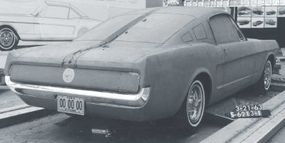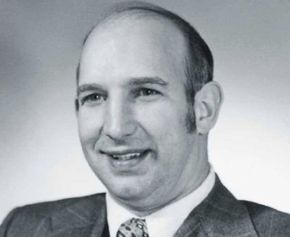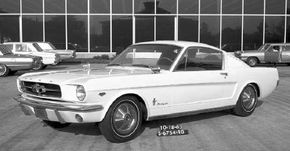Recruited to Dearborn in 1954, designer Gale Halderman had helped shape the 1957 standard Ford before moving to the Corporate Advanced Studio, where he worked on ideas for a new low-cost sporty car favored by Ford division boss Lee Iacocca. As fate would have it, Halderman was transferred to the Ford Studio just in time to help Joe Oros' team create the design chosen for the production Mustang over proposals from Corporate Advanced and the Lincoln-Mercury Studio.
Oros credits Halderman not only for contributing to the design but also for skillfully guiding the Mustang from clay-model dream to realistic, fully producible car. Here is Halderman's account of the creation of the 1965 Ford Mustang prototype.
Advertisement
I worked on a little electric-car proposal with Colin Neale and Alex Tremulis, who each did one side of a clay model. Elwood Engel said he liked both sides and wanted to do two full clays, which were then built in fiberglass. Lee Iacocca and Hal Sperlich came through and saw them. They said, "You know, they have flair and lots of excitement. Why don't we give the sporty-car package one more shot?"
Those proposals encouraged them to reopen the design process for the car that became the Mustang. They had Ray Smith prepare a 2+2 package on the blackboard, and that's where the Mustang program started.
Those proposals encouraged them to reopen the design process for the car that became the Mustang. They had Ray Smith prepare a 2+2 package on the blackboard, and that's where the Mustang program started.
We did a design series called Median based on that package -- what the car would look like proportioned in different ways and with different engine options. We did maybe six. We were still searching for the right-sized car and package arrangement. They were good-looking cars, except I think none of them were exciting enough.
About that time, I was transferred to the Ford studio again. They were just starting work on the '65 full-size Ford and I was assigned to work on it with Joe Oros. But one day Joe said, "We've just been told by Bordinat to do a proposal for a small car that Lee wants to build." I told Joe, "I won't have time. I'm doing the '65 Ford." He told me I had to give him some designs. So I went home and sketched. I took about five or six sketches with me the next morning and put them up on the board. Joe picked one of those to be clay-modeled.

Dave Ash had already done a clay -- very boxy, very stiff-looking. Joe came back from a management conference and said, "No, no, no, we're not going to do that!" That's when he said he wanted me to submit some designs. So we actually started over on the clay model using the theme from one of my designs, which had scoops on the sides and the hop-up quarter lines. The front end was primarily designed afterward.
We built the clay model in our Corporate Advanced Studio. George Schumaker was assigned to follow my sketch into the full-sized clay model. I was still working on the big '65 Ford across the hall, but during the day I kept going over to where the Mustang clay was to help interpret my sketch. Then Joe got me in there working on the taillamps and rear end while he and Charlie Phaneuf did the front end.
Learn on the next page how designers set about turning Halderman's sketch into the prototype for the 1965 Ford Mustang.
For even more on the Ford Mustang of yesterday and today, check out the following articles.
- Saddle up for the complete story of America's best-loved sporty car. How the Ford Mustang Works chronicles the legend from its inception in the early 1960s to today's all-new Mustang.
- It was the right car at the right time, but the Mustang had to await the early 1960s, when a savvy Ford exec realized the Mustang's potential. Learn how Lee Iacocca brought his "better idea" to life in 1965 Ford Mustang Prototypes.
- The Ford Mustang is central to America's muscle car mania. Learn about some of the quickest Mustangs ever, along with profiles, photos, and specifications of more than 100 muscle cars.
- Ford muscle cars were among the top performers of the muscle car era. Check out profiles, photos, and specifications of some tough Ford muscle cars.
Advertisement

